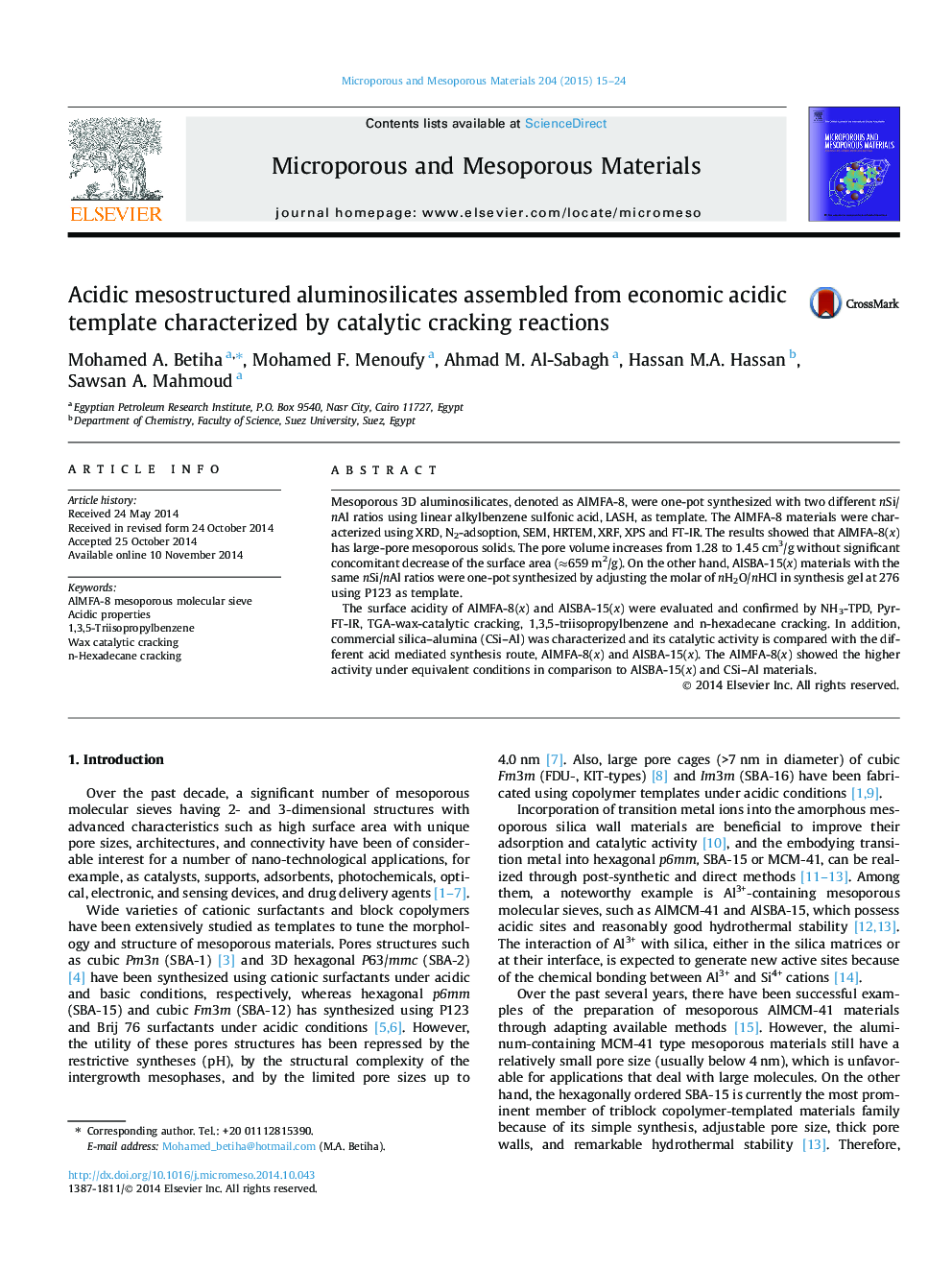| Article ID | Journal | Published Year | Pages | File Type |
|---|---|---|---|---|
| 72728 | Microporous and Mesoporous Materials | 2015 | 10 Pages |
•AlMFA-8(x) catalysts are synthesized using acidic template.•The physicochemical of the AlMFA-8(x) is compared with AlSBA-15(x) catalysts.•The prepared materials exhibited high surface area and large pore diameter.•Wax, TIP and hexadecane cracking reaction are used to compare the catalytic activity.•High catalytic activity is attributed to their morphology and nature of acid sites.
Mesoporous 3D aluminosilicates, denoted as AlMFA-8, were one-pot synthesized with two different nSi/nAl ratios using linear alkylbenzene sulfonic acid, LASH, as template. The AlMFA-8 materials were characterized using XRD, N2-adsoption, SEM, HRTEM, XRF, XPS and FT-IR. The results showed that AlMFA-8(x) has large-pore mesoporous solids. The pore volume increases from 1.28 to 1.45 cm3/g without significant concomitant decrease of the surface area (≈659 m2/g). On the other hand, AlSBA-15(x) materials with the same nSi/nAl ratios were one-pot synthesized by adjusting the molar of nH2O/nHCl in synthesis gel at 276 using P123 as template.The surface acidity of AlMFA-8(x) and AlSBA-15(x) were evaluated and confirmed by NH3-TPD, Pyr-FT-IR, TGA-wax-catalytic cracking, 1,3,5-triisopropylbenzene and n-hexadecane cracking. In addition, commercial silica–alumina (CSi–Al) was characterized and its catalytic activity is compared with the different acid mediated synthesis route, AlMFA-8(x) and AlSBA-15(x). The AlMFA-8(x) showed the higher activity under equivalent conditions in comparison to AlSBA-15(x) and CSi–Al materials.
Graphical abstractMesoporous silica–alumina samples, AlMFA-8(x), were prepared using linear alkylbenzene sulfonic acid with different Si/Al molar ratios of 7&14, and compared with both AlSBA-15(7&14) and silica alumina materials. The study aimed to discuss the influence of the preparation procedures on their structural, textural, physicochemical features and catalytic activities. Higher Al2O3 contents in AlMFA-8(x) led to higher catalytic activity for 1,3,5-triisopropylbenzene, wax and n-hexadecane cracking reactions.Figure optionsDownload full-size imageDownload as PowerPoint slide
